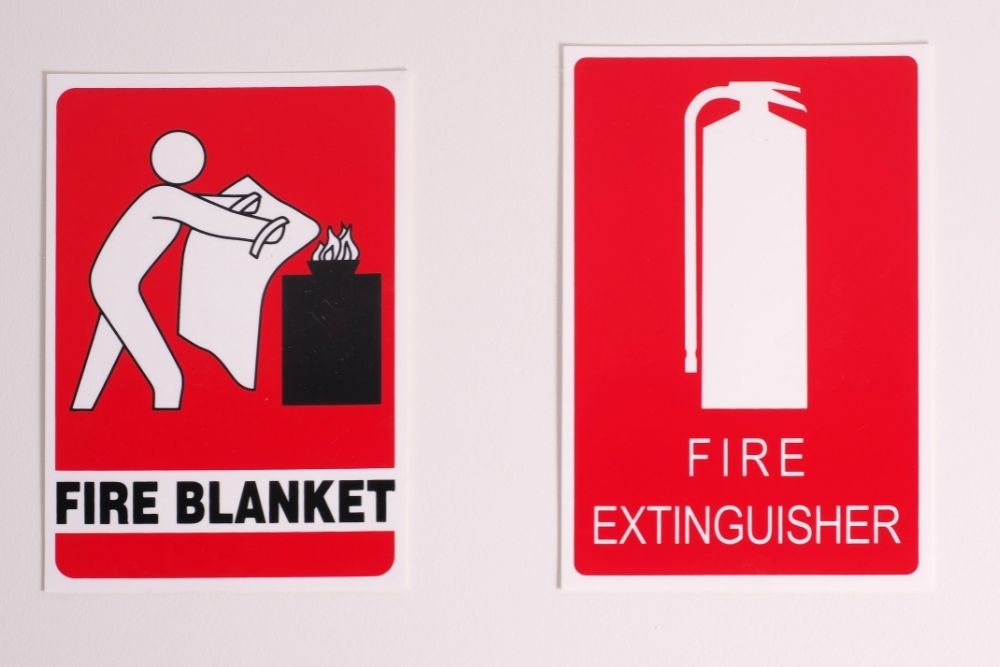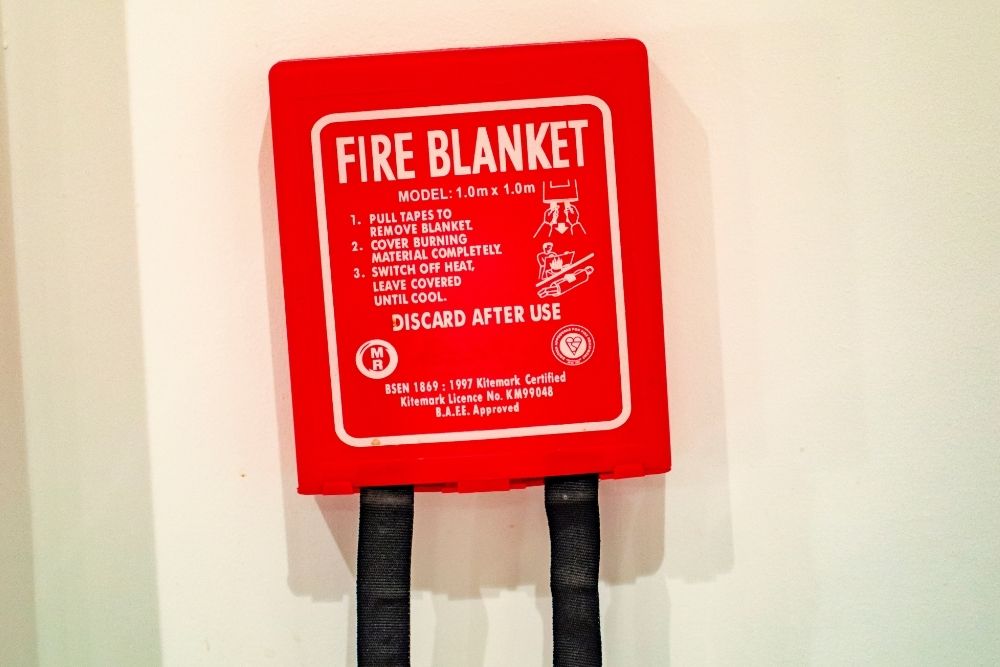Inside: How does a fire blanket work to extinguish a fire?
Many homes and businesses will have their own fire extinguisher that they can use to put out a fire if they need to, but sometimes this is not enough.
If you need to smother a fire to starve it from oxygen in order to prevent it from spreading, then you might need something else like a fire blanket instead.
Fire blankets can come in handy for a variety of different fire-based situations, which is why it is really important to have one as well as your standard fire extinguisher.
You never know what might happen, so it is always best to be prepared, just in case.
In this article, we are going to tell you everything that you need to know about fire blankets, how they work, and how they compare to fire extinguishers.
How Does a Fire Blanket Work?
A fire blanket is a blanket that has been made using fire-resistant materials, and it can be used either by putting it over the fire to smother out the flames, or it can be wrapped around someone that is on fire to put it out.
It can also help to prevent burns or to reduce the severity of their burns.
How Do You Use a Fire Blanket?
If you are planning on getting a fire blanket, or you already have one, it is really important that you know exactly how to use it. The most important thing to consider is the size of the fire itself.
Smaller blankets are great for use in a kitchen or a small office environment, as these are places where you might be more likely to encounter a smaller fire.
However, a larger blanket will be more useful for an industrial environment, as you are more likely to encounter a larger fire in this environment.
There are some steps that you will need to follow to ensure that your fire blanket is being used in the right way, and we will leave them below for you to read about.
- Turn off the gas or electricity supply straight away
- Take the blanket out of its container by pulling at the fabric straps
- Hold the straps and wrap the top edge of the blanket around your hands to protect them
- Roll up your sleeves to prevent them from catching fire when near the flames
- Make sure to cover the entire area of the fire to extinguish all of the flames
- If the fire is bigger than the blanket, do not try to put it out
- Once the fire has been put out, do not touch it or underneath the blanket for at least half an hour.
Types of Fire Blankets
There are a few different types of fire blankets that you can get, including:
- Economy – Standard size (1 m x 1 m) fire blanket in a flexible polythene pack.
- Kitchen – These are specifically designed to be used in the kitchen, and they come in a slimline white plastic container
- 1 m x 1 m & 1.2 m x 1.2 m – The best size for homes, small kitchen areas, caravans, and boats.
- 1.8 m x 1.2 m & 1.8 m x 1.75 m – The biggest size available, and best used for commercial kitchens, workshops, and places where you store flammable liquids.
Fire Extinguisher Vs Fire Blanket

Fire extinguishers are the most well-known method of fighting fires that are in their early stages, and there are options ranging from the versatile ABC extinguisher that can tackle a range of fires, to CO2 extinguishers for fires involving flammable gases, liquids, and electrical equipment, and everything in between.
Essentially, there is a fire extinguisher for almost any application.
Fire Extinguisher Pros
They are really easy to use, and they are effective in extinguishing fires around 95% of the time. However, this only applies when the fire is in the early stages, at a containable stage.
Although, even if the extinguisher cannot completely put out the fire, it can still provide a good level of control and help to prevent excessive damage until firefighters arrive at the scene.
They come in a wide range of sizes, and they are available for different types of structures and events, and they can either help to stop a fire or give you time to get out of one.
Smaller extinguishers can be used for vehicles, RV, home, or office use, and bigger ones can be used in areas with more combustible materials.
They also allow you to fight the fire from a safe distance, which is a great added benefit.
Fire Extinguisher Cons
One downside of fire extinguishers is that the larger ones can be more difficult to handle as they are quite heavy.
They are great for being able to fight fires for longer, but you might struggle to pick it up if you don’t have the best upper body strength.
This can be problematic in the event of a fire.
As well as this, fire extinguishers can leave a hell of a mess to clean up once they have been used. Of course, a bit of mess over a fire is nothing in comparison, but it is something to think about.
Another thing that you should keep in mind is that fire extinguishers will need to be either replaced or recharged after every use.
Fire Extinguisher Vs Fire Blanket
Fire blankets are simple and convenient, and they will work to smother the fire and deprive it of oxygen.
In order to do this effectively, it will need to be made from non-flammable materials and provide as much of a heat and oxygen barrier as possible.
More modern fire blankets will even have a fiberglass layer to make them more efficient.
Fire Blanket Pros
A great benefit of a fire blanket is that it can be used for personal protection if a person’s hair or clothing is on fire. You can wrap them up in a blanket to help to minimize burns and injuries.
These blankets are especially useful if the person is unable to move rapidly due to age, a medical condition, or physical limitations.
Fire blankets are also perfect for containing fires in the early stages, and they can help to lower the overall risk. A quality fire blanket will also have straps that go over your hands to protect them.
Related: 10 Best Fire Blankets for the Home
Fire Blanket Cons
Unfortunately, fire blankets are one-use only, so you will need to replace them once they have been used. They also mean that you have to get close to the fire, which can sometimes be dangerous. As well as this, they cannot be used safely on larger fires.

